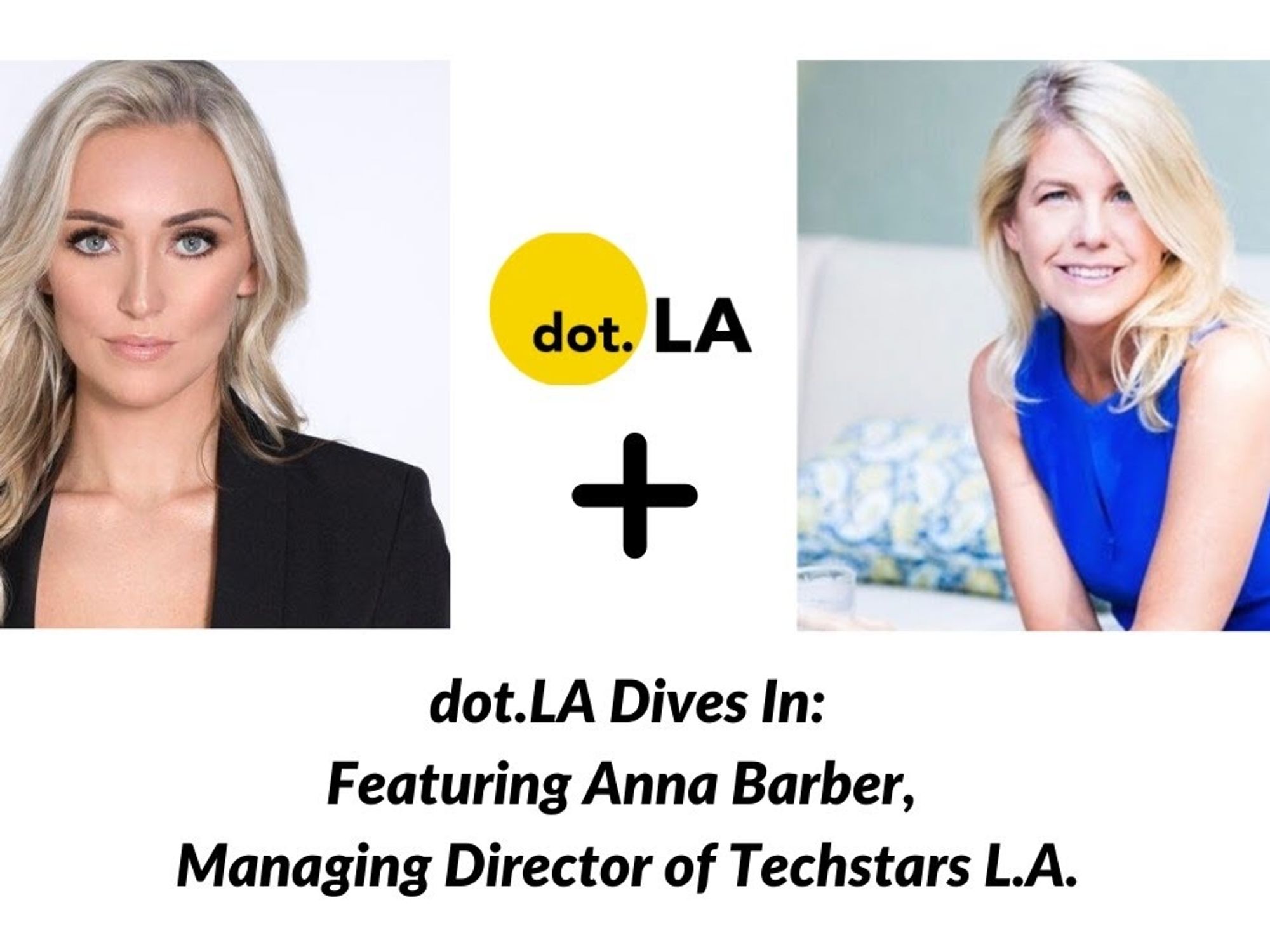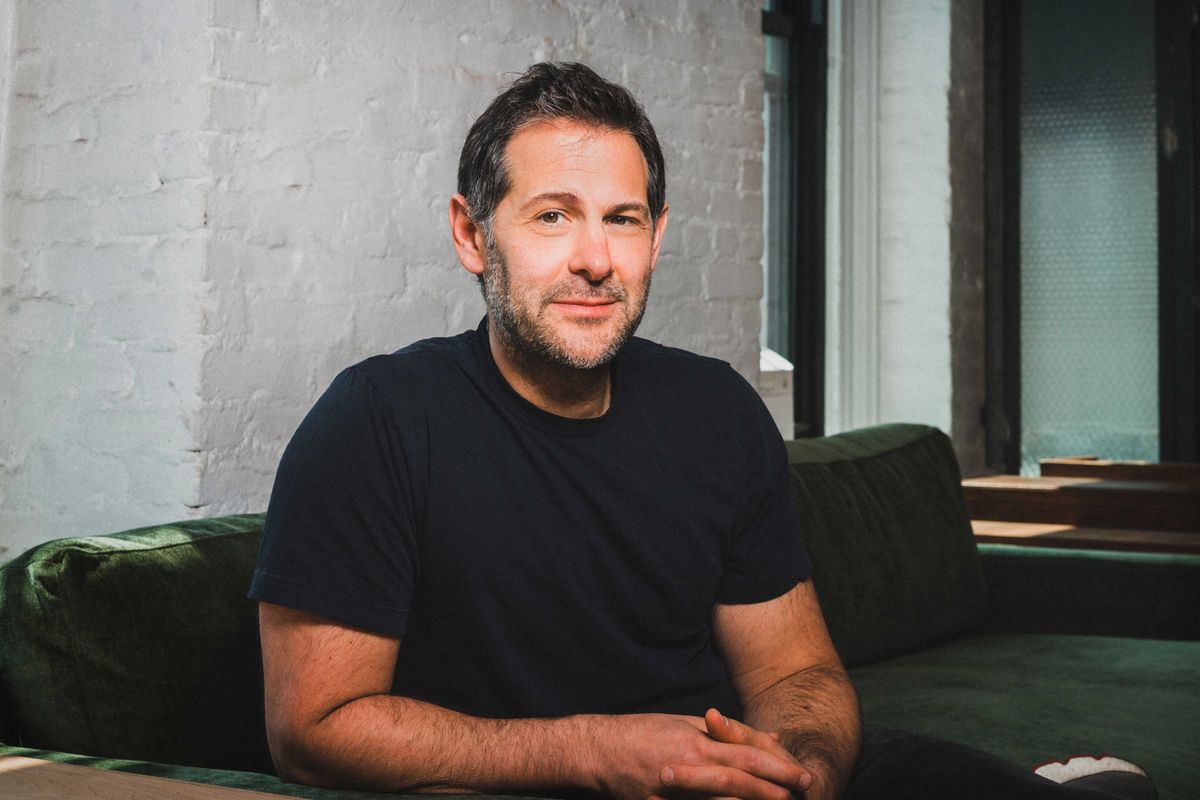Watch: Anna Barber Discusses Techstars and the Future of L.A. Tech

Ten companies. Three months. One Demo Day. But what makes the Techstars L.A. experience so transformative? And how will that translate to the current remote world? In this installment of dot.LA Dives In, we talk with Anna Barber, managing director of Techstars L.A., for a behind the scenes look at what the Class of 2020 can expect from the accelerator experience.
Meet the Techstars L.A. Class of 2020
"We have had a (Techstars) that is all virtual for a few years now, so we had some precedent. Essentially what we are trying to do is bring that community, that connection, and all the learning and the value of mentorship, but just do it in a virtual environment with the same level of effectiveness," says Barber
Since the inception of Techstars L.A., Barber has been cultivating supportive environments for startups to grow.
Some of her favorite stories are the "before and after" transformations where, by the end of its journey, the company is almost unrecognizable. Many of the accelerator participants go on to raise seed rounds after an intense three months of iteration.
"The reason people are successful fundraising coming out of the program is because they do the work of understanding the drivers of their business and moving them so that investors can see they are building on a strong foundation, and therefore their business becomes investable," says Barber. "It's not because they build a fancy powerpoint or rehearse their pitch a lot. It's because they did the work."
Barber looks for a certain type of founder that can undergo such a transformation. Each member of the Techstars L.A. 2020 class is there because Barber could envision herself working for their company. But what is it specifically that makes her say yes to a founder? Passion and an open mind.
"I'm looking for that founder who literally can't be doing anything else because they can't rest until this thing that they've envisioned exists in the world," says Barber. "Then you couple that determination with a really open-minded viewpoint of how you get there. And a willingness to learn, and a willingness to be wrong."
In addition to her role at Techstars, Barber serves as a coach and strategic consultant to founders, as well as a partner at The Fund, an early stage venture capital fund made up of local founders and operators that expanded to L.A. this year. With so much engagement in the local tech and startup community, it is no surprise that Barber has a specific vision for L.A. tech's future. Five to ten years down the line, she hopes for a Los Angeles that is contributing to the sustainability of our planet and for a community where diversity, equity and inclusion have become core components - and she plans to help make that vision a reality.
"I think, 'what is the change I want to see in the world and have L.A. be a leader?' I would love to see advances in sustainability, which I think is the pressing issue of our time," says Barber. "And I would love to see a Los Angeles where we have made meaningful progress on diversity, equity and inclusion — both on the funding side and the founding side."
Watch the full interview to learn more - in this conversation, we dive deep into how Techstars empowers startups to create impact, what it is about a founder that makes Barber say yes! and what she envisions for the future of L.A. tech. Get ready for an intriguing look at the L.A. startup scene from the woman uniquely positioned to help bring about that future.
Anna Barber: Techstars and the Future of L.A. Techwww.youtube.com
---
Kelly O'Grady runs video and serves as the chief host & correspondent for dot.LA. Find her on Instagram @kfogrady and email her at kelly@dot.LA.
- Techstars' Advice to LA Entrepreneurs - dot.LA ›
- Meet the 10 Startups in This Year's Techstars LA Program - dot.LA ›
- What Techstars' Anna Barber Looks for in Founders - dot.LA ›
- Meet Techstars LA 2020 Class - dot.LA ›
- Ann Barber Moves from Techstars to Head M13. Venture Studio - dot.LA ›
- Core Innovation Capital's Arjan Schütte on Fintech's Promise - dot.LA ›
- Techstars LA Names Matt Kozlov Its Managing Director - dot.LA ›
- Meet TechStars LA's 2021 Accelerator Cohort - dot.LA ›
- Watch Techstars LA's 2020 Class Demo Day - dot.LA ›
- Watch Techstars LA's 2020 Class Demo Day - dot.LA ›





 Image Source: Blackbird
Image Source: Blackbird